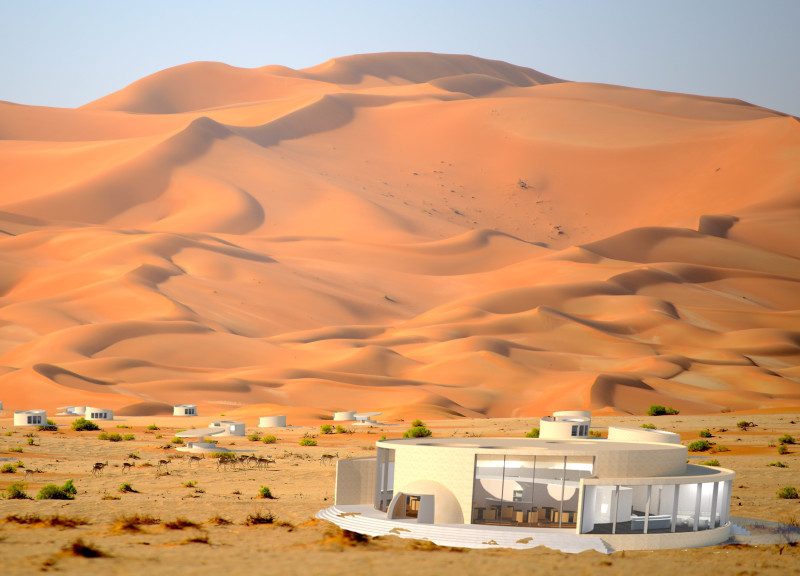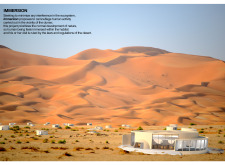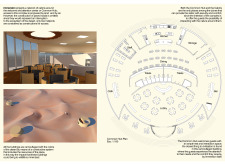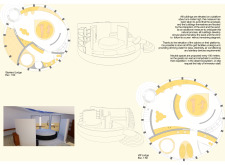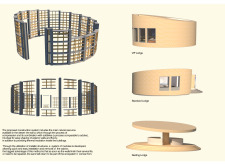5 key facts about this project
Immersion is a design located in a desert setting that emphasizes the connection between human presence and the surrounding natural environment. The concept revolves around creating a network of cabins organized around a central area called the Common Hub. This layout encourages guests to engage fully with the ecosystem while minimizing any impacts on the delicate desert habitat. By focusing on camouflage and ecological sensitivity, the design intends to enhance how visitors experience the landscape and interact with its features.
Design Concept
The design concept centers on the idea of camouflage, using colors that help the buildings blend into the desert landscape. This approach reduces the visibility of human structures and lessens their ecological impact. The layout of cabins and the Common Hub facilitates easy access while keeping the natural environment intact. Visitors can reach the area by land or air, but the absence of paved roads is a deliberate decision aimed at protecting the ecosystem from disruption.
Structural Features
Buildings are raised about one meter above the ground to avoid flooding, a necessary consideration in the desert where sand and wind are common. This design not only responds to environmental concerns but also allows for the incorporation of off-grid facilities, which are placed underground. This setup provides visitors with critical resources such as drinking water, electricity, air conditioning, and sanitation without altering the visual aspect of the landscape.
Architectural Layout
The layout features circular designs in the cabins, which promote the movement of sand and wind. This design choice prevents stagnation and allows the buildings to coexist with natural forces. Additionally, resting areas are located every 100 meters to provide comfort and hydration for visitors. These spaces give guests a chance to pause and fully absorb the surrounding environment, thereby enhancing their overall experience in the desert.
Materiality
The project makes use of sand, a key resource in this desert environment. Buildings are constructed using sand that undergoes compression and is mixed with additives similar to adobe. This method allows for the creation of exterior walls and floors that provide insulation, making them suitable for the harsh conditions of the desert. The careful selection of materials and construction methods reflects an emphasis on functionality and compatibility with the landscape.
The design features, such as elevated structures and circular plans, align with natural elements of the desert while providing essential comfort for visitors. Each aspect is thoughtfully constructed to respect and enhance the unique qualities of the ecosystem.


